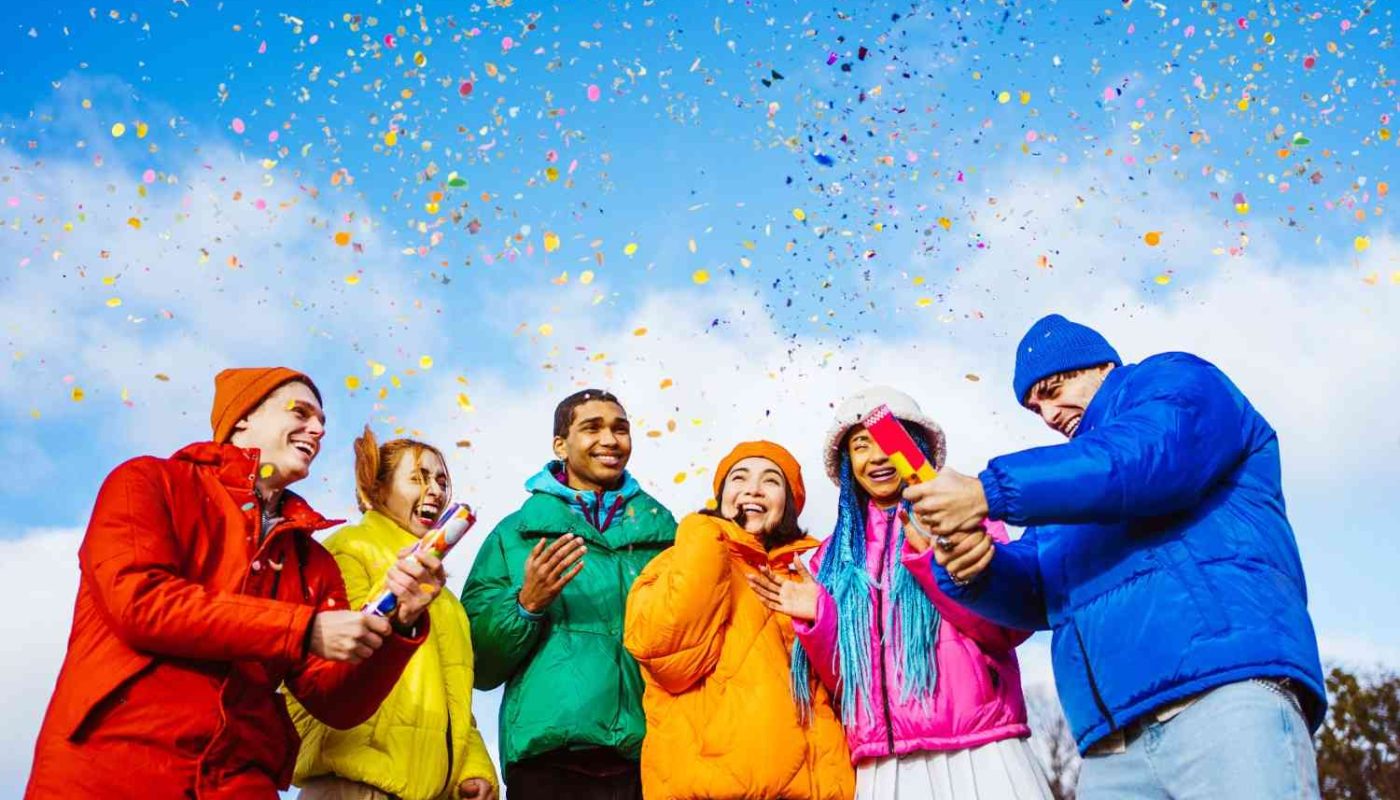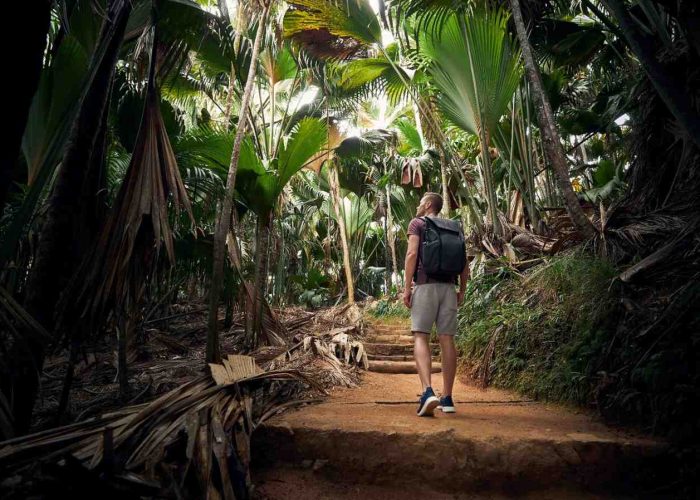Wherever you travel there is at least one language that everyone speaks, celebration. Whether it is lanterns floating through the dark Asian skies or the colorful South American streets, global festivals and events help us remember that we are all united by joy, color and culture.
Festivals do not only entertain but the festivals give us a peep into the heart and soul of a country. They narrate the tales of religion, history, togetherness, and innovation. Cultural traditions, music, food, or simple spectacle, one way or another, every tourist is able to get enchanted by the best celebrations in the world.
Let’s journey through the planet’s most breathtaking festivities and uncover what makes them truly unforgettable.
1. The Rio Carnival – Brazil’s Pulse of Passion
There is one occasion that can be characterized as rhythm, color, and life itself and this is the Carnival at Rio de Janeiro. The city goes off every February in a tornado of samba tunes, shining costumes and infectious energy. Millions of the citizens or rather the whole city is dancing in the streets making the whole city a huge, cheerful procession.
The festival was initially a catholic pre-Lent festival but it has now become a cultural phenomenon all over the globe. Nowadays, it is considered one of the most established world festivals and events with visitors coming to all parts of the world.
- Best time to go: Mid to late February
- Don’t miss: The Sambadrome parade, where samba schools compete in a dazzling showcase of choreography and creativity.
Rio Carnival isn’t just a party, it’s a living symbol of Brazil’s heartbeat.
2. Diwali – The Festival of Lights, India
Diwali is not only celebrated, but experienced in India. The oil-lamps in the streets, the night-illumination of fireworks and the warmth of family gatherings make the homes shone. Diwali is also referred to as the Festival of Lights and it represents the victory of the good over the evil and the light over the darkness.
During Diwali, travelers get to see that people come together in happiness, prayers, and goodwill. It is a religious and yet a very cheerful experience, an experience that you never forget.
To people who embrace the spirit of the immersive travel, Diwali embodies ideally what the global festivals and events are all about: to bring tradition, spirituality and spectacle together in one spectacular event.
3. Oktoberfest – Germany’s Global Toast
Few festivals blend camaraderie and culture like Munich’s Oktoberfest. What began as a royal wedding celebration in 1810 has grown into the world’s largest beer festival.
Visitors gather under massive tents, clinking steins, savoring pretzels, sausages, and live Bavarian music. But beyond the drinks, Oktoberfest represents German pride, a showcase of hospitality, tradition, and joy.
- When: Late September to early October
- Tip: Reserve tables early, the best tents fill up fast!
Whether you’re a beer lover or not, Oktoberfest proves why global festivals and events are powerful symbols of shared happiness and cultural identity.
4. The Lantern Festival – Taiwan’s Sky of Dreams
This is an imaginary situation when one is standing under a night sky that has thousands of glowing lanterns floating into the sky like stars. That is the charisma of the Pingxi Lantern Festival in Taiwan.
The lanterns have wishes written on them by their senders; these were wishes of love, luck, or health. The sky is turned into a canvas of human hope as they soar up together. It is a serene and deep experience and it demonstrates the way that light links us together regardless of our continent.
Such an occasion demonstrates how international festivals and events can be intimate and shared at the same time, personal dreams are shared on a global display of togetherness.
5. The Cherry Blossom Festival – Japan’s Poetic Spring
Japanese turn into a fragile pink and white sea every spring as cherry flowers are blossoming in parks and along the rivers. Hanami is a communal as well as a beauty tradition, known as flower viewing.
Local people and tourists hang out under the trees and enjoy picnics together, exchange zest, music, and food. The festival reflects the Japanese philosophy of mono not aware, the transient beauty.
And, when you are a traveler and want some tranquility and time to yourself, you can rarely find as good a festivity as the cherry blossom festival in Japan.
6. La Tomatina – Spain’s Wild Tomato Battle
From elegance to pure chaos, Spain’s La Tomatina is a festival like no other. Every August, the small town of Buñol turns into the world’s biggest food fight.
Tens of thousands of people hurl ripe tomatoes at each other, turning streets red in a frenzy of laughter and joy. What began as a local prank in 1945 has become one of the most famous global festivals and events, proving that celebration doesn’t always have to be serious.
Sometimes, it’s about letting loose and embracing the fun.
7. Mardi Gras – The Spirit of New Orleans
In the U.S., The Mardi Gras of New Orleans is a cultural, historical, and art event. It is a cataclysm of French tradition, a festival of parades, costumes, music, and food.
Jazz bands sauntering up and down Bourbon Street to glittering bead-and feather-bedecked floats, each spot of the city throbs with ingenuity. Mardi Gras is a festival of community and expression, a warning that happiness can be radical.
Mardi Gras is a show that demonstrates that celebration is a free act especially when it comes to global festivals and events.
8. Holi – The Festival of Colors, India
Holi is yet another cultural treasure of India, a festival of color, love and forgiveness. Individuals come together throwing colored powders, dancing and eating sweets, which is a sign of unity and revival.
It is the favorite event of travelers as it removes the boundaries, each one is a part of the same colourful mess. It is one of these few world festivals and events in which you do not merely spectate on the feast, but you are the feast.
9. Day of the Dead – Mexico’s Heartfelt Tribute
In Mexico, unlike other festivals where the main aim is to celebrate, Dia de los Muertos (Day of the Dead) involves grief and joy at the same time. Homes build altars, put candles, and bring favorite foods in their honor of the deceased.
It is one of the most spectacular global events and festivals with colorful parades, traditional face painting, and flowered marigold streets of marigold in the world. It is a miracle that teaches that love surpasses even death – a very strong message encircled by beauty.
10. Carnival of Venice – The Masquerade of Mystery
Few celebrations feel as enchanting as Venice’s Carnival. The city’s canals and plazas transform into a scene straight from a Renaissance painting, filled with masks, costumes, and timeless charm.
Behind every mask lies mystery and history, echoing centuries of tradition where disguise meant freedom and equality. Today, travelers flock to witness this elegant spectacle, proving that art, fashion, and heritage remain at the heart of global festivals and events.
Why Festivals Matter More Than Ever
The global festivals and events in the fast digitalizing world provide us with something extremely human of bonding. They teach us that we are all similar under our differences, that we all need to celebrate, make a statement, and be a part of something.
Festivals help to promote cultural exchange, local economies, and some traditions which could otherwise be forgotten. They are museums of happiness, narrative, and strength, a reminder that here culture is not static, but moving and changing.
No matter whether you are moving through continents or even visiting a local festivity, festivals allow you to feel the pulse of humanity.
FAQs
1. Why are festivals important for travelers?
Festivals allow travelers to connect authentically with local cultures. They provide an immersive experience where you can witness traditions, art, food, and music in their most vibrant form.
2. How can I prepare to attend international festivals responsibly?
Always research the cultural significance of the event before attending. Dress appropriately, respect customs, and support local vendors and artisans. Responsible participation ensures these traditions continue sustainably.
3. Which festivals are most family-friendly?
The Cherry Blossom Festival in Japan, Diwali in India, and Oktoberfest during daytime hours are excellent choices for families. They offer cultural depth, beauty, and safe, welcoming environments for all ages.
The Celebration Never Ends
In all the borders, whether we are in the deserts of Africa or in the mountains of Europe, international festivals and events remind us about what makes humanity the same, joy, creativity, and community.
The next time you intend to travel, do not simply visit the landmarks but go in search of festivals. Hear the sound of the drums, see the lanterns up to the sky, taste the confetti on your flesh. It is when you are in those moments, when you are listening to music, laughing and coloring, that you get to know the soul of a place.
Travel is discovery, but festivals are belonging. And the world, with all its lights and sounds, is waiting to welcome you to the dance.



